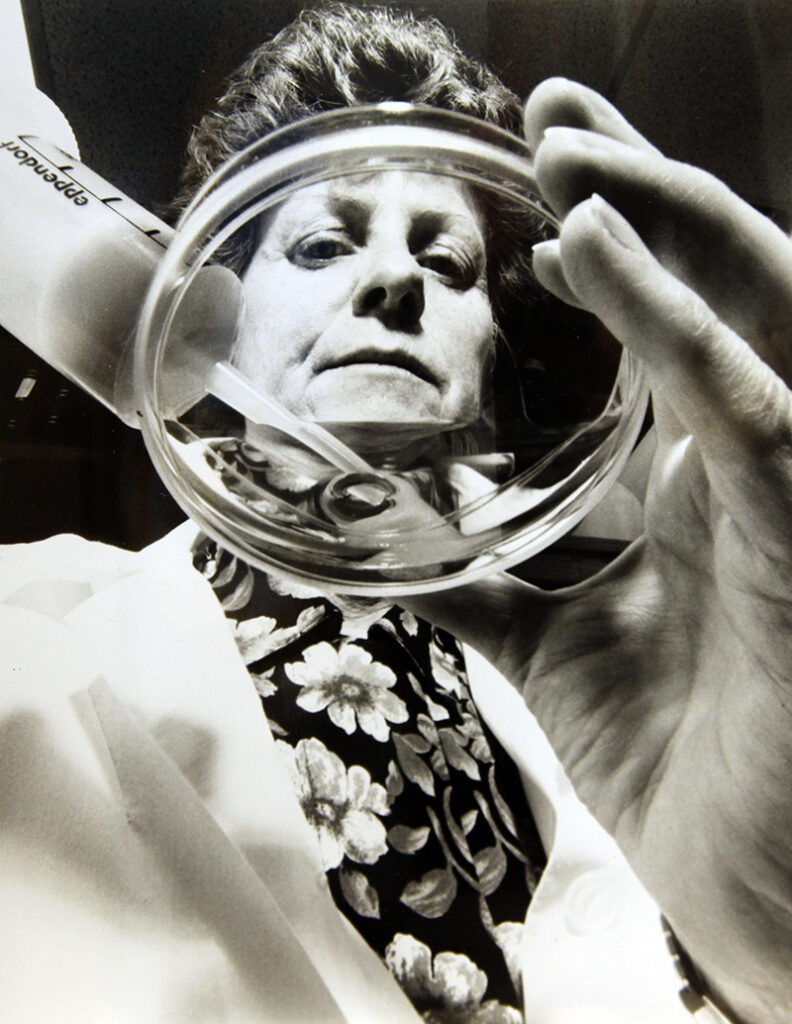
By Kendra Oliver and Marissa Shapiro
In the heart of rural Kentucky, on a modest farm surrounded by rolling fields and endless skies,
Elaine Sanders-Bush began a journey that would lead her to become an icon in the world of science, where she unraveled some of the brain’s myriad mysteries. Sanders-Bush earned a bachelor of science degree in biology and chemistry at Western Kentucky University. Between 196 and 1967, she was part of the graduate program in pharmacology at Vanderbilt University, which became the backdrop of her remarkable scientific career rooted in discovery and mentorship.
Returning to Vanderbilt as a faculty member in 1969 following a brief postdoctoral fellowship, Sanders-Bush’s research centered on serotonin and its receptors from a lens of pharmacology, signal transduction, and in vivo brain function. She joined the department during Allan D. Bass’ two-decade tenure as department chair, during which he grew the department’s reputation to what it is today: a nationally recognized program focused on academic excellence and mentorship.
The bulk of her Vanderbilt career was during Joel Hardman’s tenure as department chair. Hardman heavily influenced the department’s emphasis on trainee mentorship while also fostering rigorous scholarship. His work included the discovery of guanylate cyclase, the enzyme responsible for synthesizing cyclic GMP from GTP, and led scientists to understand that cGMP, like cAMP, can serve as an intracellular second messenger.
Across Sanders-Bush’s career, she leveraged advancements in molecular biology, genetics, and new understandings of behavior to unravel the mysteries of the brain. This work would have ripple effects for generations of Vanderbilt trainees and faculty in the years to come.
Beyond her academic research, Sanders-Bush was the driving force behind the development of Vanderbilt’s neuroscience research and graduate education programs; thanks in large part to her efforts, Vanderbilt established its Ph.D. program in neuroscience in 1997.
This period also saw another first in the department: the first female chair, Lee Limbird. Limbird joined Vanderbilt 10 years after Sanders-Bush in 1979. She was department chair from 1991 until 1998 and became the first associate vice chancellor for research at the Vanderbilt University Medical Center, serving in that role until 2003. Limbird, who went on to hold leadership positions at Meharry Medical College and Fisk University, studied the basis for the actions of epinephrine and norepinephrine via α2-adrenergic receptors and examined trafficking itineraries, the functional relevance of the receptors’ structure, and their interface with a variety of signaling pathways.
Limbird and Sanders-Bush joined forces to expand the department’s activities together, a task that was facilitated by Sanders-Bush’s appointment as the inaugural director of the Vanderbilt Brain Institute in 2002. Like Limbird, she shared a passion for diversity, equity, and inclusion, which she has demonstrated through work designed to enhance minority training programs at Tennessee State University, Meharry Medical College, and Vanderbilt. The impact of her efforts and outstanding mentoring earned her the inaugural Levi Watkins, Jr., Award for Leadership Diversity and the Dr. Dolores C. Shockley Lecture and Partnership Award.
Over her research career, Sanders-Bush received other prestigious awards on national and international stages, including the Bristol-Myers Squibb Award for Neuroscience Research and a MERIT Award from the National Institute of Mental Health. She became interim chair of the Department of Pharmacology in 1999 until Heidi Hamm was named chair in 2000.
Sanders-Bush’s legacy joins that of others in the Department of Pharmacology and extends far beyond scientific achievements into mentorship and a commitment to widening the gates of the discipline to welcome scientists of all backgrounds. This long tradition of inclusion and rigorous inquiry has known no bounds and has paved the way for the next 150 years.